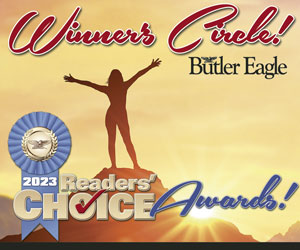The savory story of H.J. Heinz Company
Few food companies have had a more lasting impact on American eating and buying habits than Pittsburgh’s own H.J. Heinz Company. By developing quality products and marketing them in innovative and creative ways, the company grew from a small local food purveyor into one of the most recognized brands in the world.
Born in Pittsburgh in 1844 to German immigrant parents, Henry John Heinz began selling produce from his mother’s garden to local grocers as a boy. By age 25, in partnership with his friend and neighbor Clarence Noble, he founded the Heinz & Noble Company in Sharpsburg and delivered to grocers his horseradish – and later pickles, sauerkraut, and vinegar. Following several ups and downs in the early years of the business, including bankruptcy in 1875, Heinz rebuilt the company and by the time of his death in 1919 had created a company with a global presence.
When he started the company, Heinz had rightly sensed that there was a growing market for prepared foods. By the middle of the 19th century, the country had undergone intense urbanization and industrialization, which only accelerated after the Civil War. Railroads grew to span the country, and the advent of refrigerated freight cars meant food could be shipped great distances. While most Americans had grown their own food or purchased it locally, those moving to cities became dependent on produce and canned goods transported to urban areas. Heinz targeted urban consumers by providing condiments such as horseradish and relishes that added flavor to bland dishes and variety to bland diets.
An intuitive marketer, Heinz set out to differentiate his product from competitors and to create a brand that consumers could rely on in a time before federal food regulations. He utilized traditional advertising means such as print ads and signs, but he also innovated, using a trained salesforce (he called them his travelers), large and expensive attractions such as the first electric sign in New York, and product demonstrations at grocery stores, fairs, expositions, and food shows. Heinz products, packaged in clear glass, bore distinctive, eye-catching labels designed to attract the consumer’s attention and communicate a simple message of purity, convenience, and good taste.
One of the most enduring brand symbols originated on a trip to New York when Heinz noticed a billboard offering “21 styles of shoes.” He liked the idea of having a number associated with his products. Soon after, the “57 varieties” could be seen on billboards and magazine adds throughout the country. Although his company produced well over 60 products, he liked the look and sound of “57 varieties.” And just like his famous ketchup, the slogan caught on.
Heinz loved expositions and fairs and never missed an opportunity to promote his company at these events. His elaborate displays and tasty products won many awards. In 1889, Heinz pickles won the gold medal at the Paris Exposition, the first time an American pickle manufacturer won such an award in Europe. The Heinz booth or building at any Fair attracted large crowds with elaborate displays and generous giveaways. At the World’s Columbian Exposition in Chicago in 1893, H. J. Heinz found his company’s exhibition space located on the second floor of the Agricultural Building away from major attractions. To draw visitors, he printed tags offering a free souvenir at the Heinz display and scattered them on the fairgrounds. Hundreds of thousands of people climbed the stairs to the Heinz exhibit, where they tasted food samples and received a pickle charm. The popular little pickle charm evolved through 10 different shapes and styles into today’s pickle pin. The pickle pin has been called one of the most effective marketing promotions of all times.
Agriculture played a central role in the Heinz business. Without fresh produce, Heinz had no product to sell. The Heinz Company controlled each step of the operation, from cultivating its own special cucumber and tomato seeds, making the glass for its signature bottles, delivering the product in patented railway cars, and processing it at his state-of-the-art factory. In the 1880s Heinz had acquired an old vinegar factory in Allegheny and by1898, that North Side factory had become the largest food-processing facility in the world. A marvel to visitors, it boasted some of the first electric ventilation systems in Pittsburgh and electric lights throughout. Made of brick and designed to be completely fire resistant, the factory had an electric fireproofing system that closed doors and sounded fire alarms. Heinz adopted a continuous flow system and assembly line techniques years before industrialists such as Henry Ford. Engineers travelled from around the world to see the plant. Heinz salesman then took the product from the factory directly to the grocer, bypassing wholesalers. From the grocer the product ended up on consumer’s tables.
Although he did not invent ketchup, by the time of his death Heinz ketchup was a national bestseller. Over 800 different ketchups brands were produced in this country before 1915, very few of those companies survive today and only Heinz is known around the world. A creative visionary, founder H.J. Heinz, charted the course that transformed his local pickling business into a global company that now serves customers in 200 countries on six continents. Heinz, a man who carried both a tape measure and a small notebook in his pocket, saw the world in a unique way - both organized and orderly and thoughtful and creative. His core values, quality, transparency, respect, and integrity, were enhanced by a spirit of creativity, inquisitiveness, enterprise, and innovation.
Visitors to the Heinz History Center’s Heinz exhibition can learn more about the over 150-year history of the company, watch innovative videos chronicling the genealogy of the Heinz family, and enjoy never-before-seen artifacts from the History Center’s collection, the largest of its kind in the world. For more information, visit www.heinzhistorycenter.org.
Emily Ruby is senior curator at the Heinz History Center.













